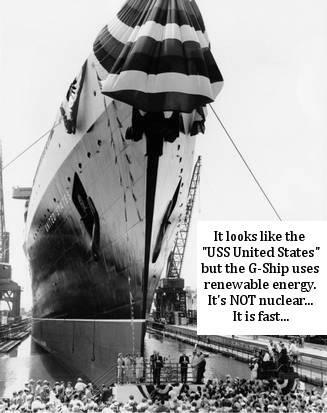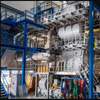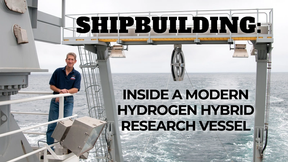G-Ship Renewable Energy Propulsion at 25 Knots
The Newport Beach Company G-Ship LLC finished a four-month validation with the CSC, Advanced Marine Center team led by Alexander Landsburg shows 90% fuel savings for containerships.
Since the Steamer came along, sailing vessels have stayed the course as the leader in renewable energy propelled ships. Now, G-Ship LLC has come up with a ship design and propulsion system for improved performance at speeds greater than 25 knots.
The unique transformation of a hydropower engine and a fascinating cogeneration strategy were compared using the Emma Maersk as the baseline. The Emma Maersk diesel power plant with 80 MW of power was compared to the G-Ship with the same dimensions but the G-Ship design used water jets instead of propellers.
The CSC, AMC report contains some startling narrative, “… the essence of how the basic energy system works is rather elusive… the system remained mysterious along with what is perhaps the key element enabling energy savings, the much higher efficiencies… took quite a while for our team to understand and appreciate…”
Naval Architects at the Society for Naval Architects and Marine Engineers (SNAME) will receive a technical presentation Friday, October 24, 3 p.m. at the Annual Convention in Houston to explain how we flood 38,000,000 gallons of seawater a minute into the G-Ship hull. If the fireworks are near as bright as when the CSC Naval Architects were told that in Washington, DC, it should make for some lively discussion.
The G-Ship design consumes more cargo space for propulsion than the Emma Maersk using a diesel power plant but the G-Ship designed for 25 knots or greater speed quickens delivery and adds cargo-carrying voyages to boost the bottom line for ship owners. The 90% reduction in fuel expense and the 50% boost in speed would earn five times the annual profit for shipping firms at current rates.
The biggest single differentiator of the G-Ship is the use of hydropower with zero emissions. With regulations stiffening and ship owners looking for cost effective ways to cut emissions the timing seems Providential.














